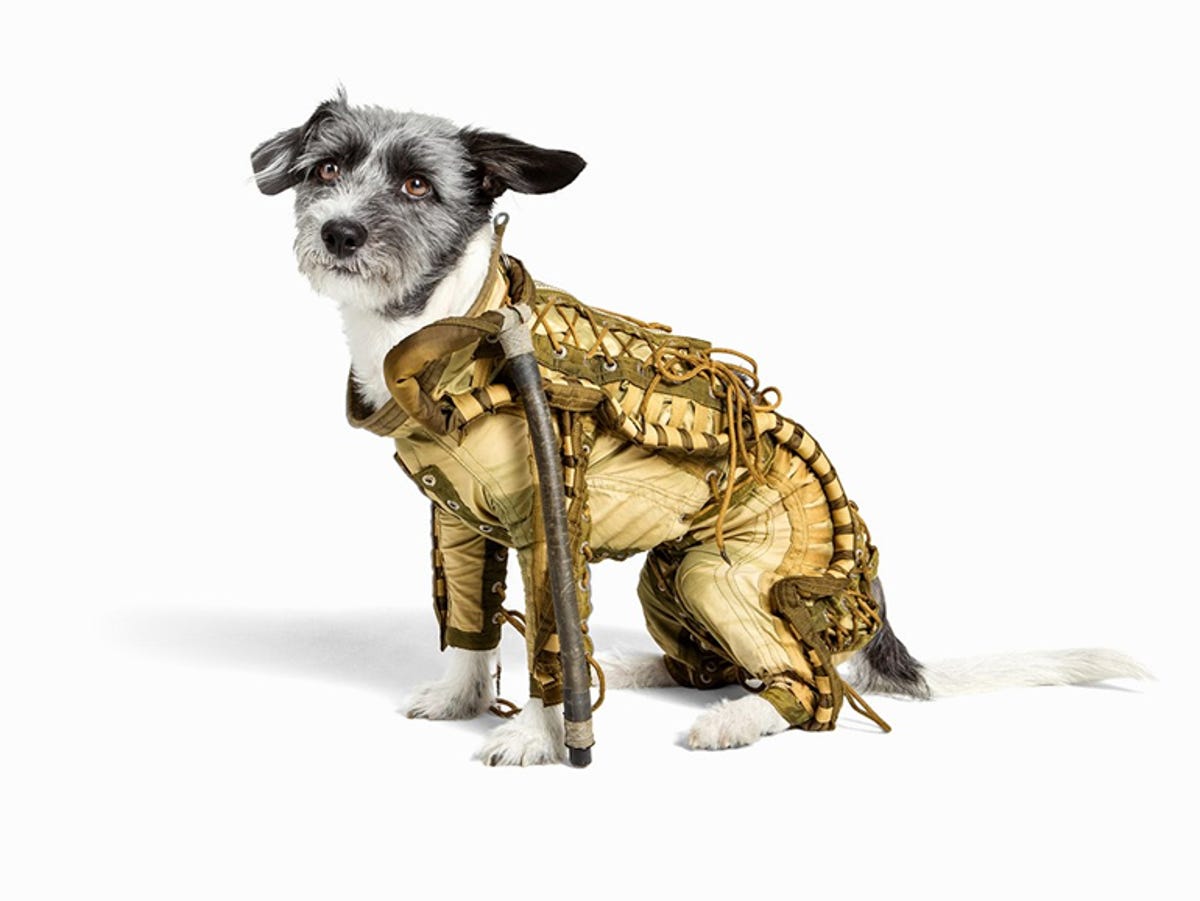Vintage Soviet space memorabilia (pictures)
An auction on September 13 will see the sale of 104 pieces of memorabilia from the Soviet space program, including a cognac bottle signed by Yuri Gagarin.

Doggie space suit
Before sending humans into space, scientists had to study the effects of low gravity and launch velocities on living mammalian bodies. For this, they used dogs -- not always to the animals' benefit -- wearing high-pressure suits, launched 80km from the Earth and landing using parachutes. Dogs were preferable to primates because they sat still for longer. This specific suit was used to train dogs Belka and Strelka during the Sputnik 5 mission in 1960.
Miniature space suit
This is a replica of the Sokol KV-2 space suit worn by astronauts flying to the space station Mir. Because each space suit was tailored to the specific wearer, astronauts would sometimes buy them as a souvenir when departing the space program -- but for those whose space suits were re-tailored for new astronauts, manufacturer NPP Zvezda would often make smaller replicas. This suit comes in at just 86cm high and 40cm wide. It has a starting price of €1,500 (approx $1,930).
Andora hydrosuit
This 1980s-era hydrosuit was designed for emergency landings on water. This one, however, is a work of art, modified by Andora with glued-on googly eyes. It also comes with brown rubber gloves, a helmet, and a toy gun decorated with stickers, googly eyes and pompoms, all with a starting price of €500 (approx $644).
Soyuz space gear
From the 1970s come some actual, wearable protective space gear: a set that includes a Sokol helmet, a pair of gloves and a pair of Orlan overshoes, designed for spacewalks, all originally used for the Soyuz mission. Orlan gear is still in use today aboard the ISS; but these three vintage pieces will set you back at least €1,500 (approx $1930).
Space food
We're all curious about what space food tastes like, but this might be one meal that best remains untasted: hailing from the 80s, this selection of space food includes five unopened packets of dehydrated food: wheat, butter, and bread are sealed in plastic, while a tube contains cheese and a tin contains meat and vegetables. The three packets of dried food are numbered, which means they've probably been to space, and included in the lot is a Thermos decorated with rocket imagery. It carries a starting price of €150 (approx $193).
Coffee with milk container
This used tube that used to contain astronaut coffee with milk isn't just any used tube that used to contain astronaut coffee with milk: it was consumed, and is signed by Pavel Popovich, the eighth human being ever to go into space. The tube is also dated: August 15 1962, the date Popovich returned from his mission aboard the Vostok 4, during which he stayed almost three days in orbit. It contained one of the very first ever beverages developed for zero-G consumption, and has a starting price of €340 (approx $438).
Moon globe with landings
This 1:10,000,000 scale moon globe made in 1967 is based on very early photographs of the dark side of the moon, on which the moon cartography developed by Yuri Naumovich Lipsky is also based. The globe itself is inscribed with Lipsky's name and annotated in Cyrillic -- and is marked with all the US and Sovient moon landings up until 1973 -- 13 landings in total. Its starting price comes in at €400 (approx $515).
Astronaut sleeping bag
It should come as no surprise that astronauts in zero-G can't use loose blankets. Instead, they use sleeping bags. This Soyuz-era sleeping bag is no ordinary astronaut sleeping bag: it's covered, front and back, with over 800 pins and banners commemorating Russian space program missions and joint space missions with other countries. Included in the lot is a 1977 guide to Russian space badges so that the winner of the auction can understand many -- although not all -- of the pins. The starting price is €400 (approx $515).
Gagarin cognac bottle
Like the coffee tube, this bottle is empty -- but not without value. It was consumed by astronaut Yuri Gagarin, the first human to fly into outer space in 1961. Gagarin drank the cognac on February 11, 1967 after he received the news that he was nominated as backup pilot for the ill-fated Soyuz 1 mission. The bottle is inscribed with Gagarin's signature and the date. It has a starting bid of €1,200 (approx $1,546).
Vostok fragment
Now this is truly special. When Yuri Gagarin took his historical flight into space on April 12, 1961 -- the first human to enter space -- he flew in the Vostok 1 spacecraft. This small fragment, measuring just 5.8cm in length, is a piece of that spacecraft's landing capsule -- signed in Cyrillic "Gagarin Vostok". It's absolutely one of a kind, and carries a starting price of €3,000 (approx $3,866).

